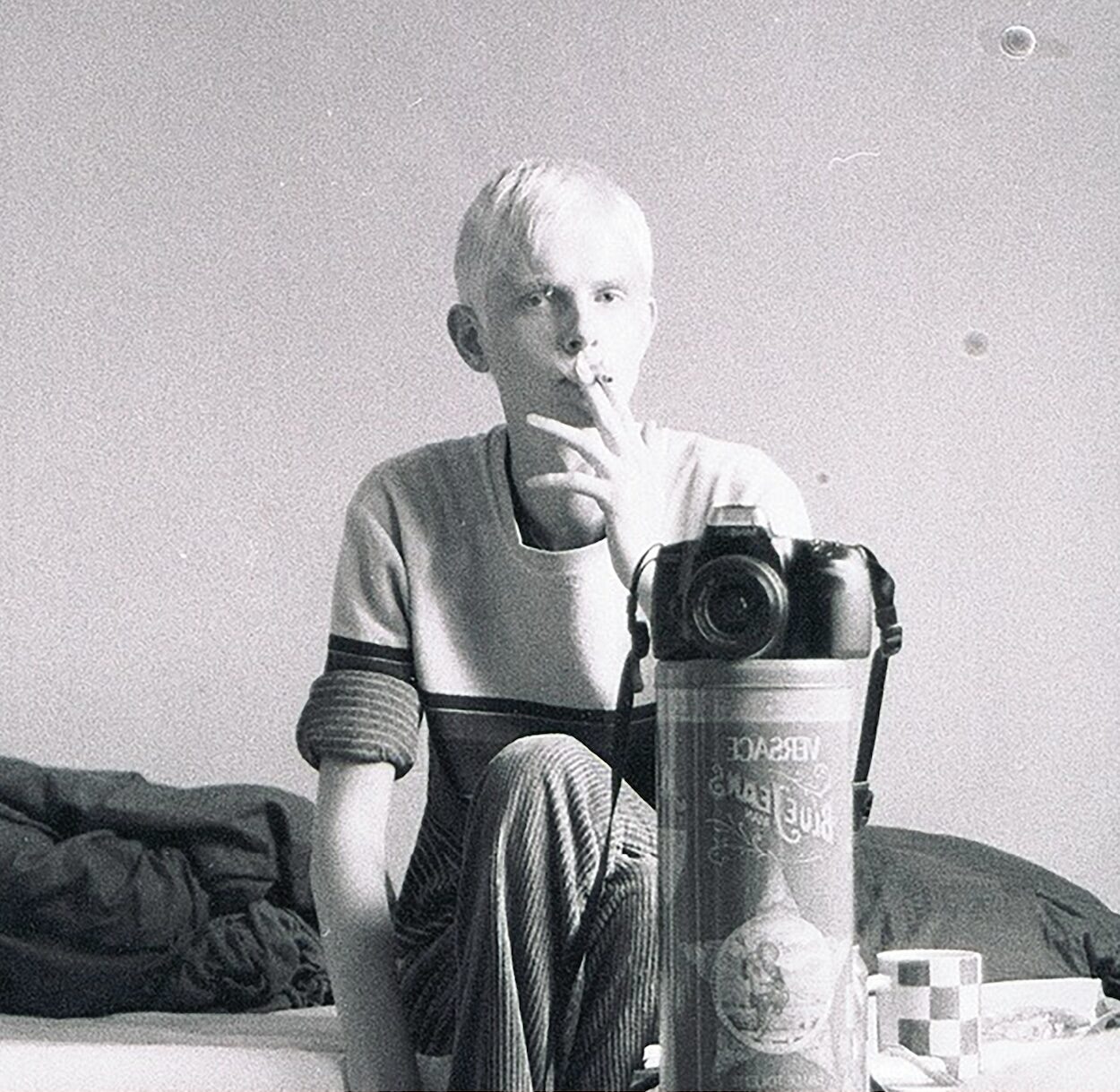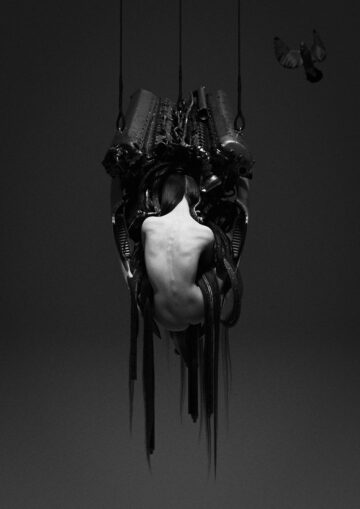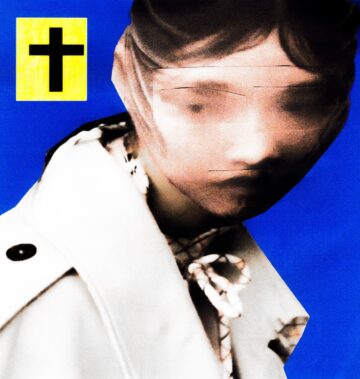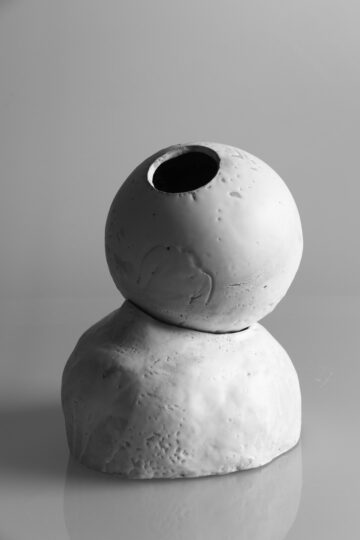Snapshots of Youth and the Sound of the Past

“Back then, I had never considered myself a photographer.”
Berlin, 2025.
Close by Kottbusser Tor, better known as Kotti. Many people have gathered on this day to celebrate the photo book “Anfang / Beginning: Berlin 1990 – 1994”. An archive of snapshots from another time, as seen through the curious eyes of ever-young Christian Stemmler.
It’s clear that this book has value that goes beyond a single target group. As a documentation of youth, community, friendship, love and Berlin, it has the power to connect and inspire young people of past and current generations. Within the crowd were a few somehow familiar faces. The teens and tweens from Anfang/ Beginning. Christians old friends, matured but still young at heart. They talk and rejoice – some of them haven’t seen each other in years. The photos might be from a time that is now long gone. The club culture in Berlin has changed, the living situation, the way people dress, live and meet.
Maybe, in some ways, we are less connected to each other nowadays, than back then, when you had to write down addresses and phone numbers to stay in touch. The Berlin of the 90’s surely wasn’t perfect, but it was a place that was unafraid of honesty and change. A place that, after decades of separation, was trying to find itself again. A place where doing nothing and everything at the same time seemed oddly possible. When you talk with people nowadays about Old Berlin, about what it was like to be young there, before the age of the internet, their words often speak of a certain longing for the past. Maybe this is why Christian Stemmler’s retro perspective photo book arrives at such a perfect point in time. Not because of pure nostalgia, but because many people are possibly looking for a direction for their life; one that exists outside of the social media mainstream.
I sat down with Christian to talk about Berlin, style, youth and staying young.
Christian S: The interesting thing about the question is: Nobody cared. I must have somehow known subconsciously that what happened then was worth documenting. I was obsessed. I just wanted to photograph people and keep a record of what was happening. But nobody really took any notice. Back then, if you didn’t have a tight relationship with someone, they simply vanished out of your life again. You could not add anyone on social media. We kept records of numbers in a notebook that each of us carried around; that was the only way. And this was even before mobile phones, so we only knew some land line numbers. And not everyone even had a land line. There were some friends that I only saw in the clubs.
I think people nowadays cannot imagine anymore how complicated it was back then – In theory. I never perceived it as such. It was, what was normal back then. If you knew an address, you simply stopped by. If nobody was there, you’d just leave again. You’d know anyways that they would be back in the club next Friday. And if not, you simply never saw them again. It was somehow more absurd when you could suddenly reach everyone when mobile phones became a thing.
Because of the image rights I tried to find everyone. A few reached out afterwards, when they discovered the book. Or through a third person. I was so afraid that some people would maybe not want to be a part of this project. But everyone was so happy. It was very touching.
CS: Around twenty percent of the images that I consider good are included in this book. So there definitely is potential for a second book or an exhibition; to maybe approach it from different artistic points of view. I actually did a lot of posed portraits, too, that weren’t included in this final selection. Anfang/ Beginning is more a collection of snapshots, a documentation.
Back then when I took the photos, I had already labeled all the films very well: All the envelopes with negatives had a date, where it was, etc. When I then sat down and started scanning, it of course took a while. With a negative scanner, you have to scan image per image. It takes about an hour per film. But this actually helped me with making decisions, by sort of re-living these moments, too.
I also had to cut out a lot of things because I didn’t want the book to be too pricey. I noticed that this younger generation is interested in something like this, too. It should actually be affordable to the kids. But this also meant that I had a limit for the amount of pages I could use. It turned out to be 192 pages.
Back then, if you didn’t have a tight relationship with someone, they simply vanished out of your life again.
CS: I was surprised by how good they turned out. After all, they’ve been sitting around for almost thirty years before the book. Still, after working as a stylist for a long time – and being exposed to style and photography for almost 25 years – I somehow anticipated that there would be something interesting in there. But still, back then, I had never considered myself a photographer. So to see these raw emotions captured so well by my back then untrained eye was truly surprising. Of course, a lot of the credit goes to the people themselves. They are very cool people to begin with.
Taking photos was also different back then. People didn’t pose the way they pose now. You were not so obsessed with your image, didn’t take selfies. There were no digital images of you. I think that’s another reason why the people in the images have certain expressions to them. They are somehow surprised and grateful that I took a photo of them.
CS: I actually saw how well it captures my approach to style. The people, what they wore and how they wore it, influenced me a lot. What I wore back then, too. Me and my friends’ style had a huge impact on my later work. When I took a look at some of these images, I thought: Wow, I still dress women like this. Like these cool girls that I met when I was 18. In the very beginning there is a couple, dressed in a leopard fur coat and red coat. They were the first lesbian couple that I met when I was a teenager. I thought they were so cool. And this image left its mark on me. Some of the looks in this book are looks you could wear today. Young people that I have shown these images to, said: ”It sort of looks like today. And somehow, not.” Style is about nuance.
This time, the nineties in Berlin, was of course hugely influential for a lot of people. For style in general. It still is.
CS: Interesting question. That time, the nineties, they’re over. This sense of escapism, living life day by day and the drug consumption that comes with it; it’s not possible anymore. You have to be fucking rich in order to afford this sort of life. All the people you see in the book are East-German working class kids. They had no money. We managed, but just because back then rent was 100€ per month. If you convert the money I had available per month back then to Euros, it was around 375€ in total. It covered rent and everything else. And sometimes you even had money left over at the end of the month. If you compare it to now, it’s insane. You cannot live like this anymore, neither in a European capital nor anywhere else. I would have to think of something else.
CS: Tbilisi, where I live now. I consider it a time capsule. I also finished up the book there. The club scene in Tbilisi comes the closest to what I experienced back in Berlin. Of course, Social Media, Capitalism, Gentrification, it’s all leaving its mark there, too. And still, it remains somehow protected from many things. Kind of like Kiev was before the war.
Another aspect is of course, that the whole club culture hasn’t existed in Tbilisi as long as it has in Berlin. Here, in Berlin, the same music has been on repeat for the past 35 years.
But there is still a sense of newness and the Euphoria that comes with it. It’s also a bit softer. There is much less of a drug-epidemic, too. I don’t really go out in Berlin anymore. I already experienced the best Berlin parties that one could experience.
CS: To keep on moving. Having intergenerational exchange. Listening to young people, that’s super important to me. Staying curious and constantly expanding your mind.


Christian Stemmler — ANFANG / BEGINNING: BERLIN 1994–99
ANFANG / BEGINNING: BERLIN 1994–99 captures the raw pulse of post-wall Berlin, a city in…

BLASPHEMOUS
“MAN HAS CREATED HIS OWN MASTER, ONLY SO THAT HE MAY EVENTUALLY DETHRONE HIM AGAIN.”

IN CONVERSATION WITH ARTIST JONA KÖPF
Jona Köpf is a young artist based in Stuttgart. Besides his commercial work as a…
WEEKEND MUSIC PT. 69: IN CONVERSATION WITH KING PRINCESS
King Princess grew up in New York and has already left their mark on the music scene at…

WEEKEND MUSIC PT. 68: IN CONVERSATION WITH PAULA ENGELS
Shortly after releasing her debut album, "Kommt von Herzen", we met Paula Engels to…

ARTISTS TO WATCH
EMI MIZUKAMI, SVEN DURST, IVANA VLADISLAVA, PAUL FERENS, STEPHAN, GRUNENBERG, CATO…